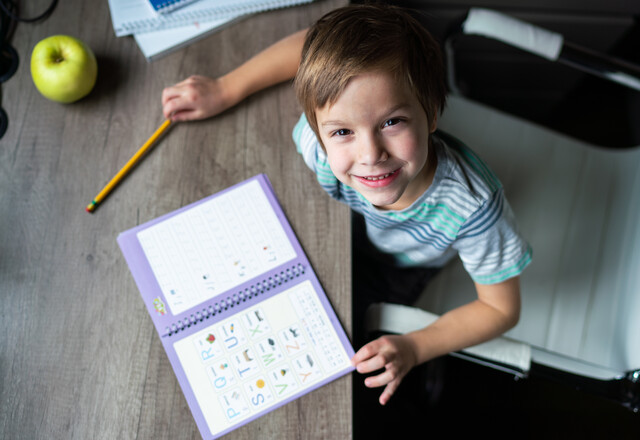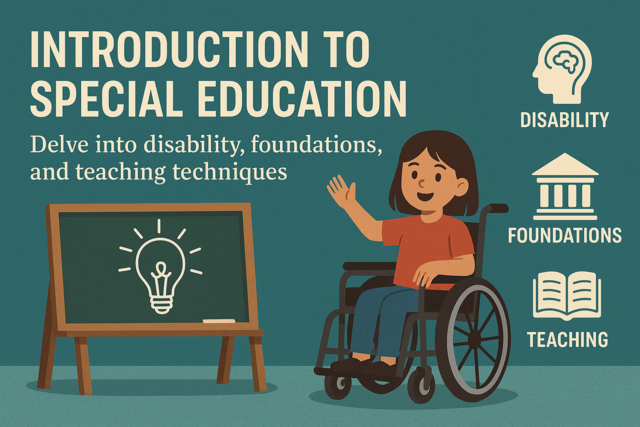Perhaps the most daunting challenge that awaits any substitute teacher is the classroom full of students. New substitute teachers may worry about individual student needs, misbehavior, and how to keep a classroom of thirty students, or more, on task, focused, and cooperative. Combine that with knowing that school administration is hoping that their substitute teachers can keep everyday classroom situations under control, it can make for a very stressful situation.
Classroom management is a very complex topic. There are countless books, studies, and courses just on classroom management. Unlike recommendations for how to prepare for your day of substitute teaching, classroom management has so many variables because students are all different from one another.
To help potential substitute teachers navigate the challenging (and perhaps unsettling) waters of classroom management, you will see that this topic is divided into two sectionss. In this first sections, you will focus on proactive measures of classroom management; these are the things that you can do as a substitute teacher to try to plan for and encourage positive behaviors from your students. In the next sections, you will learn strategies and techniques for handling discipline challenges and other off task behaviors.
The Truth about Substitute Teachers
The one unfortunate truth about substitute teachers is that some students view them as targets. Perhaps the substitute teacher is not really the target, but the day itself is a target. Students will often view a day with a substitute teacher as a day that no work needs to be done, no rules need to be followed, and chaos can ensue. Unfortunately, as a substitute teacher, you will often have this working against you, and you need to be prepared for it.
The Substitute Teacher's Mindset and Attitude
To foster a classroom environment that is conducive to learning and encourages on task behaviors, you as the substitute teacher need to think and act in ways that create that classroom environment. Substitute teachers must assume that they will be alone with their students all day and that they must make quick decisions on how to handle any unexpected behaviors or events that arise.
Successful substitute teachers think of themselves as competent professionals, ready to handle most things that come their way. Notice the word "most"; you as a substitute teacher are not expected to handle every situation on your own. For example, some students have special medical needs and perhaps can have seizures or go into diabetic shock. In these instances, the help of out-of-the-classroom professionals, such as the school nurse, are necessary. (This is why it is important that you know how to find that help if you need it.)
If you think of yourself as a competent, confident professional, your words and actions will follow. Students can quickly notice authority figures who do not appear confident or in control; to prevent students from taking advantage of your doubts and fears, be sure to realize that you have all the skills and abilities needed to do the job successfully.
If confidence is hard to muster without experience, you can at least act like you have confidence. One clear way is to use an authoritative voice (see Chapter 6). Speak firmly with surety. Another way is to stand with good posture. Stand tall without slouching to show that you are an authority figure to take seriously. Finally, make eye contact. Avoiding eye contact with students, particularly the challenging ones, shows that you are frightened. Good eye contact, on the other hand, shows that you are aware of what is happening in the classroom and that you are serious.
One important note to make here is that confidence and authority are different from hostility and tyranny. An authoritative voice, stance, and attitude mean that you are in charge, not that you are "mean" or unfair. If you approach the class by yelling, losing your temper, and scaring the students into submission, it paints you as a bully, and students will either fear you or rebel, and neither situation makes for a comfortable environment for learning.
A Classroom Management Plan
Successful classroom management plans are ones that are based on high but attainable expectations, are easy to remember, are clear to see, and are fair and consistent. Some experienced substitute teachers develop their own classroom rules for the day and run the classroom based on those rules. While the regular teacher has his or her own rules established, you as a substitute will not know exactly what they are and how consequences are administered for failure to comply. That is why it may be to your advantage to develop your own plan and follow it.
In trying to think of what your classroom management plan should be, remember the qualities of successful plans in the above paragraph. You may also want to consider approaching your plan from the idea that you expect students to behave and stay on task but that you are prepared for misbehavior as it occurs. This is an important point. Regular teachers and substitute teachers both have greater success with student behavior if their expectations are that students can and will behave rather than expecting the worst. Keep that in your mind, and you will see better success with your classes.
Classroom Rules
The best classroom rules are ones that are easy to understand, apply to all situations, and deal with behavior only. When you are thinking about how you want students to behave, think about what is most important to get through the class or day smoothly. Then, develop about three to five rules. It is better to have a small number of rules because you can easily write them on the board, and it is easier for you and the students to remember. A list of fifteen rules is too cumbersome!
Some useful classroom rules you may want to consider include the following.
- Follow all directions.
- Do not use profanity and other rude language.
- Keep hands, feet, and objects to yourself.
- Pay full attention to me when I raise my hand, ring the bell, or blow the whistle.
- Do not yell or scream.
- Walk, do not run, in the classroom or in the halls.
Each of these rules is something that you can clearly see if they are being followed or not. They are also easy for students to understand and to follow. Clear, observable rules are also easy to enforce if they are broken. For example, most students will not argue with you if you need to discipline Johnny for poking Sarah with his pencil. It is a clear rule that you saw being broken.
Negative Consequences
Again, if you expect that students will behave, you will see better behavior. However, when situations arise where students break your rules, you need to be prepared to respond. The best way to deal with this is to have predetermined consequences with the number of infractions.
For example, you could have consequences for first, second, third, and fourth infractions. The first infraction should always be a warning. This warning should be delivered with a serious voice to let students know that you are not kidding. "Johnny, our rule is to keep hands, feet, and objects to ourselves. This is your warning." Second and third infractions should be consequences that are easy to implement. Examples could include staying a minute or two after class, losing five or ten minutes from group time or recess, or a time out. If a fourth infraction for the same behavior occurs, the consequence should involve a referral to the office (or whatever system the school has told you is in place for disruptive students). When you write the referral, it is important to note how many infractions there have been for the same behavior and what consequences for those infractions you already administered. You will be seen as a competent teacher and will receive greater administrative support for this.
As with your rules, you should go over these negative consequences at the beginning of the class. Students need to know not only what behaviors you expect from them but also what will happen if they are broken. This will help students make wise choices, see that you are in charge, and reduce complaints of you being unfair.
Positive Consequences
Substitute teachers find greater success with implementing their classroom management plans if they also include positive consequences along with the negative.
You can implement positive class wide consequences, such as awarding the class points for good behavior and then giving a reward based on the number of points earned. For example, you can award one point for each fifteen minutes students remain on task. These points can go on the board, and at the end of the class or day, each point can be worth two minutes of free time. Points can be awarded for following directions, keeping on task, or paying attention. Rewards can be free time, extra recess, or more.
Individual positive consequences are also effective. You can tell the class ahead of time that students who receive no warnings throughout the day or class period will be commended to the regular teacher. Perhaps the first student to follow a specific direction gets to be first in line. Genuine praise also goes far; all people like to hear good things about themselves. Some substitute teachers carry stickers or other small rewards to give to exceptionally good students.
In the last section on classroom management, you looked at the things that can help you set up a successful plan for facing a day of substitute teaching. These are best described as proactive measures because you take them before there are any challenges in your day and to help minimize those challenges from occurring.
However, in even the best run classrooms, situations arise that cannot be planned for ahead of time. Despite the best proactive measures to keep a classroom running perfectly, students do misbehave, get off track, or need extra support. In these instances, substitute teachers are most effective if they know the best reactive strategies and techniques for minimizing disruption and returning the class to the normal routine.
Enforcing Your Classroom Management Plan
In most cases, the majority of issues of classroom management you will face as a substitute teacher will be of minor student misbehavior. You will see students talking out of turn, not completing the task at hand, or otherwise trying to do what they want to do rather than what they should do. If you prepare your classroom management plan ahead of time (see Chapter 9), post it on the board, and review it with the students, you should have no trouble enforcing it. Moreover, enforcement is indeed the key to a successful classroom management plan.
Most young people, and adults for that matter, want to know what is expected of them, what their boundaries are, and what they can get away with when put in a new situation. As a substitute teacher entering the previously established classroom environment, you are a new situation. Students will want to test the waters to see what they can get away with. Rarely are challenges you have in the classroom about you; while it may be difficult to remember in the heat of the moment, do not take this kind of misbehavior and challenging personally.
Your classroom rules have told the students what they should and should not be doing, but they will test your resolve to enforce them. When students break a rule, it is important that you recognize it and provide the appropriate consequence. If the plan that you shared calls for a warning on the first infraction, losing three minutes of recess on the second, and losing ten minutes on the third, enforce it. This will show that the boundaries are exactly as you stated them. The class will know that you expect what you have stated and that the consequences that you promised will be enforced. After a few tests of your ability to enforce, you will find that in most circumstances that you will have a cooperative day of substitute teaching.
There are a few pointers to remember when enforcing your rules and providing consequences. First, your composure and delivery should remain matter-of-fact and in charge. You only need to state the obvious, "Gwen, the rule is that you need to follow directions. I already warned you once to take out your math workbook. Now, I have asked you to complete this worksheet, and you have not started it. You will now have to stand with me for the first five minutes of recess." The goal is to keep calm in your voice and demeanor and not to lose your temper. You will command greater respect as someone in authority and not as a bully or loose cannon. Having students live in fear of your outbursts or actions will not make for a good relationship.
Second, there is no room for discussion or challenge when you are enforcing your rules. The student in question may not like the consequence, but since you have clearly repeated the rule and stated the consequence for breaking the rule, the student has little room to argue. Do not let the student take advantage of you in that way. If the student wants to draw you in to such a discussion, remember that it is a way of determining if the rules and consequences really matter, of finding out the real boundaries of the classroom. If you allow the student to argue with you or if you relent, you will have a much harder time keeping order as the day goes on.
Third, consistency is the key. If you provide a consequence for one student who broke the rule on not running in the classroom, you need to do so for any other student who breaks it. Otherwise, you run the risk of appearing as though you are playing favorites, and seldom does that gain respect.
Other Reactive Techniques
The purpose of your classroom rules and consequences is to keep students on task and accomplish the lesson left for you to teach. Sometimes, after you have been tested on your rules and consequences, you may find students who, now knowing where the line is will run right up against it. A classic example would be a student who is off task, and you warn this student as a first infraction. The student responds by getting to work, but in the process, is giving you a "dirty look" or otherwise nonverbally communicating anger to you. In situations like this, students hope that you take the bait, which would get you off task (thereby allowing the class to be off task) by confronting the student. Usually, in these circumstances, it is best to let those student responses go. After all, the student is now on task and not disturbing others, which is what you wanted. No rules are broken, so let the student fume. You can even praise the student later for getting on task. Ultimately, you have prevented a potential behavioral issue from escalating into something more.
Another effective technique is using proximity. If you have a student who has been having some difficulty following the rules and appears poised to be off task some more, simply moving near the student can help keep on task and show that you are aware of the behavior.
Likewise, proximity can be used to remove students from situations that seem to be causing difficulties. For example, if a student it working in a group, is being disruptive, and does not respond to your direction, you may choose to remove the student from that group. It is usually a good idea to give the student a choice ahead of time, "Denise, I see that you are disrupting your group. You have a choice to stay on task or work by yourself." Once you have given that choice, if the student chooses to continue the disruption, take care of the situation: "Denise, I see that you have chosen to work by yourself. Please move over here."
Again, in any of these disciplinary circumstances, you need to remain calm and matter-of-fact. You will have better success by keeping your composure; it helps to diffuse potentially difficult situations.
Difficult Students
No matter how prepared you are with an effective classroom management plan, and no matter how calmly and consistently you enforce your rules, there may be students who do not choose to cooperate. These students may seem to be insistent on breaking the rules and breaking your spirit even after the rest of the class seems to have "gotten it" and are cooperating with you. Chances are that you are not the only person with which these students have trouble.
While there may be a wide variety of reasons why these students are challenging, from not understanding the lesson to home lives where they are ignored, the simple fact is that you need to keep order in the classroom, and you need to ensure that the lesson continues for the rest of the class. If a student is not reacting positively to your consequences, your warnings, or other techniques, and if the student's behavior is escalating inappropriately, you may consider writing a referral and sending the student to the office. Of course, this is a last resort, but if keeping the student in the room is only bringing more trouble for everyone else, then do it.
When sending students to the office, it is a good idea to contact the office with the intercom or telephone (however the school does it) to let the office know that the student is on the way. Otherwise, the student could roam the halls or leave the building, and no one in authority would know. Either at that time or later in the day, be sure to write as detailed a report as possible of the situation for the office: time, date, what was said, what happened, and so on. When a student is sent to the office, the office personnel need full details.
If a student's behavior is extreme enough, you do not need to enforce your consequences as usual. Violent behavior or anything else that may threaten safety should be dealt with by sending the student to the office immediately; a simple warning is not appropriate.























